In this comprehensive Aomori Travel Guide, travelers will find everything they need to plan a visit, including top attractions, seasonal insights, culinary highlights, and practical travel tips. The guide is perfect for independent explorers, cultural enthusiasts, and those seeking a slower, more immersive pace of travel in Japan.
Nestled in the northernmost part of Honshu Island, Aomori is a treasure trove of natural beauty, ancient culture, and heartwarming hospitality. This peaceful destination is often overlooked in favor of Japan's big cities, yet those who make the journey are rewarded with a unique blend of tradition, rural charm, and breathtaking landscapes.
About Aomori - Gateway to Northern Japan
Aomori Prefecture sits at the tip of Japan's main island, surrounded by the Sea of Japan to the west and the Pacific Ocean to the east. It acts as a gateway to the Tohoku region, a less-visited part of Japan known for its rugged coastlines, mountainous terrain, and preserved traditions. The name "Aomori" translates to "blue forest," which is a nod to the region's lush natural surroundings.
Despite its remote location, Aomori is a culturally rich area with historical sites dating back to the Jomon period. Visitors can discover a harmonious blend of old and new, with ancient ruins existing alongside modern museums and charming local markets. The city's welcoming atmosphere creates a delightful introduction to northern Japan.
Getting to Aomori from Cruise Port

For travelers arriving by sea, the Aomori cruise port is located close to the city center, which makes it an accessible starting point for exploration. The terminal is well-organized and provides helpful signage in English. From the port, visitors can reach most key attractions in just 10 to 20 minutes by taxi or shuttle service.
Transportation options include public buses, taxis, and organized tours. Walking is possible for nearby areas like the Aomori Bay Bridge or A-Factory, but reaching cultural and historical sites further inland requires guided transportation. The travel infrastructure is tourist-friendly, even for first-time visitors to Japan.
For those seeking a seamless and enriching experience, joining an Aomori shore excursion is the most efficient way to discover the region’s cultural depth and scenic beauty. These curated tours are designed with cruise passengers in mind, timed to align with ship schedules and tailored to highlight Aomori’s most captivating sites without the stress of navigating unfamiliar transport systems.
Top Things to Do in Aomori for Curious Travelers
For curious travelers eager to look beyond the usual tourist trail, this region reveals layers of tradition, artistry, and breathtaking landscapes. From vibrant local festivals to tranquil historic sites and scenic coastlines, Aomori invites exploration at every turn. Below are some of the top things to do that showcase the soul of this captivating port city.
Nebuta Museum WA-RASSE
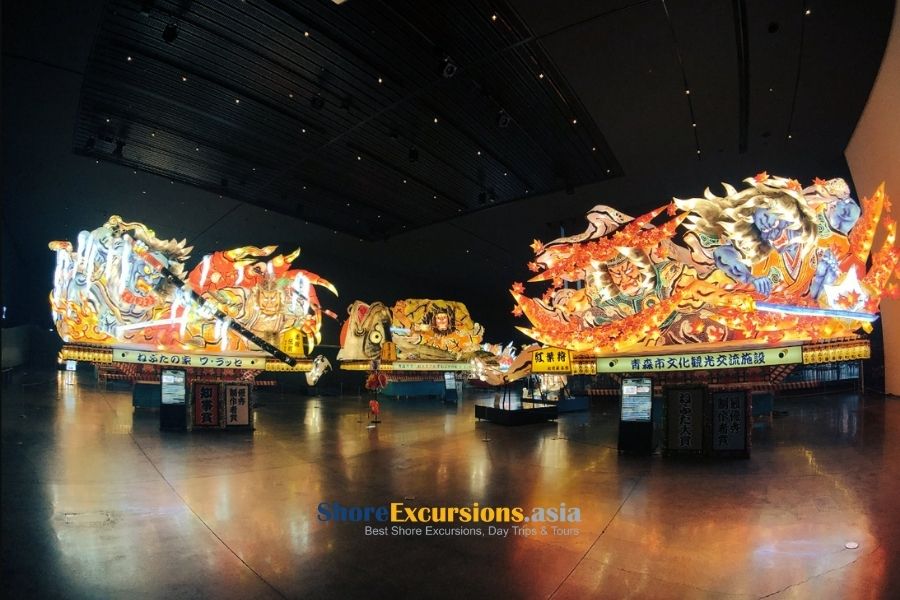
Aomori's most famous cultural event is the Nebuta Matsuri, which is a spectacular summer festival featuring illuminated paper floats, energetic dancers, and traditional music. Fortunately, travelers do not have to visit in August to witness its magic. At the Nebuta Museum WA-RASSE, visitors can admire these colorful floats year-round.
The museum offers interactive exhibits, live performances, and behind-the-scenes stories about how the floats are crafted. This museum is a must-see in Aomori travel guide for anyone interested in Japanese festivals, and it provides valuable cultural insight into Aomori's artistic spirit.
Sannai-Maruyama Historical Site
Step back in time at the Sannai-Maruyama Site, one of Japan's largest and most significant Jomon-period archaeological sites. This expansive complex showcases reconstructed pit dwellings, longhouses, and artifacts dating back over 5,000 years.
Visitors following Aomori travel guide can walk among the ancient ruins, explore the on-site museum, and even try traditional crafts. The site is well-presented in English and ideal for travelers interested in prehistoric culture and early Japanese history.
Hakkoda Ropeway & Nature Trails

For nature lovers, the Hakkoda Mountains offer a refreshing escape into highland scenery. The Hakkoda Ropeway lifts visitors up to Tamoyachidake Peak, where panoramic views of Aomori unfold. In warmer months, the area is dotted with wildflowers and hiking paths; in winter, it transforms into a snow-covered wonderland.
The crisp mountain air, scenic trails, and natural silence make this a rejuvenating experience. It's a favorite among those looking to connect with the natural world without the hustle of tourist-heavy destinations.
Aomori Bay Area & A-Factory
The Aomori Bay Area is a vibrant waterfront promenade that blends shopping, dining, and cultural experiences. One of the highlights here is A-Factory, a stylish market and cider brewery featuring locally sourced products, including Aomori's iconic apples.
Travelers can taste apple-based treats, sip on sparkling cider, and browse artisanal goods. The area is especially charming during sunset, when the bay lights reflect off the water and the Nebuta House glows in the background.
Seasonal Aomori Travel Guide: Best Time to Visit Aomori
Aomori is a year-round destination, with each season offering a distinct atmosphere, vibrant landscapes, and cultural highlights. Here, you're drawn to cherry blossoms, lively festivals, autumn foliage, or snow-covered hot springs. This Aomori travel guide will help you choose the perfect time to visit based on your interests.
Cherry Blossom Magic in Spring
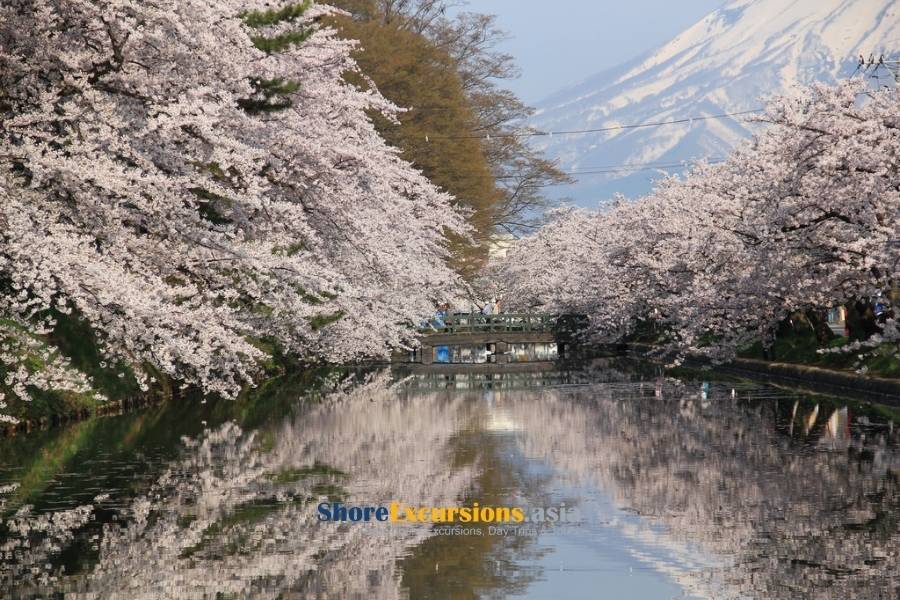
Spring in Aomori is a time of renewal and breathtaking beauty. From mid to late April, cherry blossoms blanket the region in delicate pink hues, creating some of Japan’s most picturesque spring scenes. The crown jewel of this season is Hirosaki Park, home to over 2,600 cherry trees surrounding a historic castle.
The reflection of blossoms on the castle moats and the petal-filled pathways make this a must-see highlight for any spring traveler. As noted in many Aomori travel guide recommendations, visiting during cherry blossom season offers a serene yet vibrant introduction to northern Japan's cultural and natural treasures.
The Electrifying Nebuta Festival in Summer
Summer turns Aomori into a dynamic spectacle of color, music, and tradition. The city comes alive during the Nebuta Matsuri, held annually from August 2 to 7. This iconic festival features massive illuminated floats, crafted from washi paper and painted with mythical themes, paraded through the streets with dancers (haneto) and taiko drummers.
The energy is contagious, drawing both locals and visitors into the celebration. If you're planning a summer trip, this Aomori travel guide essential is not to be missed, as it offers a unique chance to witness one of Japan’s most famous and photogenic festivals.
Autumn in Aomori: Fiery Foliage in the Mountains
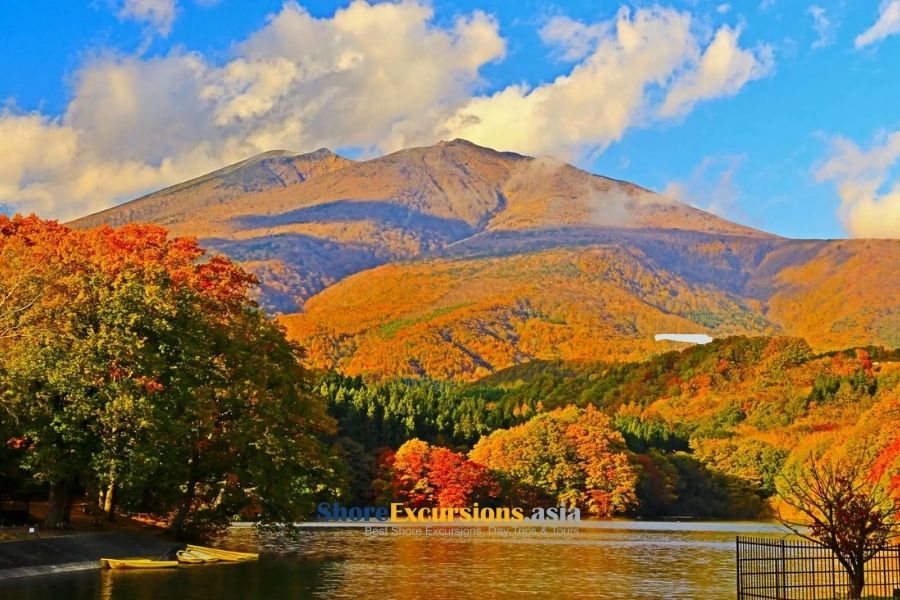
Autumn in Aomori is a visual feast. From late September through October, the mountains and forests transform into a canvas of crimson, gold, and amber. The Hakkōda Mountains and Oirase Gorge are two of the top spots for leaf-peeping, offering panoramic views and tranquil hiking trails surrounded by fall colors.
The air is crisp, and the light is golden which is perfect for photography enthusiasts and nature lovers alike. According to every reputable Aomori travel guide, autumn is ideal for those who want to experience the region’s quieter, more contemplative side.
Snow, Serenity, and Hot Springs in Winter
Winter blankets Aomori in deep, powdery snow, turning the landscape into a peaceful wonderland. The city and surrounding regions are known for their heavy snowfall, making it a dream destination for snow lovers. This season is perfect for soaking in traditional onsen (hot springs) such as those in the Hakkōda area or Asamushi Onsen, where you can relax in steaming mineral baths while gazing out at snow-covered scenery.
For a unique experience, ride the Hakkōda Ropeway to enjoy panoramic views of the frosty peaks. If you're referencing an Aomori travel guide for winter activities, you'll find that the blend of outdoor adventure and indoor relaxation is one of the season’s main appeals.
Aomori Travel Guide for Food Lovers
No Aomori travel guide would be complete without a deep dive into the region’s distinctive local cuisine. Blessed with fertile land and access to rich coastal waters, Aomori has developed a food culture that reflects its natural abundance and northern traditions. If you’re arriving by cruise, you’ll also find many great places to eat just a short walk or ride from the port.
Famous Aomori Apples

Aomori is known nationwide as the apple capital of Japan, producing over half of the country’s apples. Thanks to its crisp climate and volcanic soil, the apples here are particularly sweet, juicy, and fragrant. From the iconic Fuji to lesser-known varieties like Orin or Jonagold, these fruits are a must-try.
You’ll find apples sold fresh at markets, or transformed into pastries, pies, juices, and even ciders. Be sure to stop by A-Factory, a stylish marketplace near the Aomori cruise terminal, where you can sample apple-based desserts and sip on locally brewed apple cider with views of the bay.
Signature Hotate Soup
Another staple in any Aomori travel guide for food lovers is Hotate Soup, a comforting scallop soup made with Aomori’s famed seafood. Scallops harvested from Mutsu Bay are known for their size and sweetness. In this regional specialty, they are simmered with miso, seaweed, and vegetables to create a nourishing, umami-packed broth. Some variations even include rice or noodles, turning it into a hearty meal perfect after a chilly day of sightseeing.
You can try a delicious bowl of Hotate Soup at local izakayas or small eateries around Auga Fish Market, just a few minutes from the port. This market also offers a “nokke-don” experience where you can create your own rice bowl with fresh toppings, including hotate sashimi.
Tsugaru Ramen

Ramen lovers won’t want to miss Tsugaru Ramen, a local noodle dish that reflects the soul of northern Japan. Featuring a light yet flavorful soy sauce-based broth made from niboshi (dried sardines), this ramen is less oily than its southern counterparts but rich in depth. The noodles are typically firm and slightly curly, pairing beautifully with slices of pork, bamboo shoots, and green onions.
You can enjoy authentic Tsugaru Ramen at restaurants like Ajino-Sapporo Oonishi, a local favorite located just a short taxi ride from the port. It’s the perfect stop for cruise passengers looking to sample traditional flavors before heading back to the ship.
Where to Eat Near Aomori Port
If you’re short on time but still want to taste the region, there are several convenient dining spots near the cruise terminal. Aside from A-Factory and Auga Fish Market, try the local eateries inside Lafrance Café & Market, which offers both casual and upscale bites featuring local ingredients. These locations are walkable and popular among visitors, making them ideal for a relaxed lunch or afternoon snack.
Other Aomori nearby popular destinations
Hirosaki Castle Town
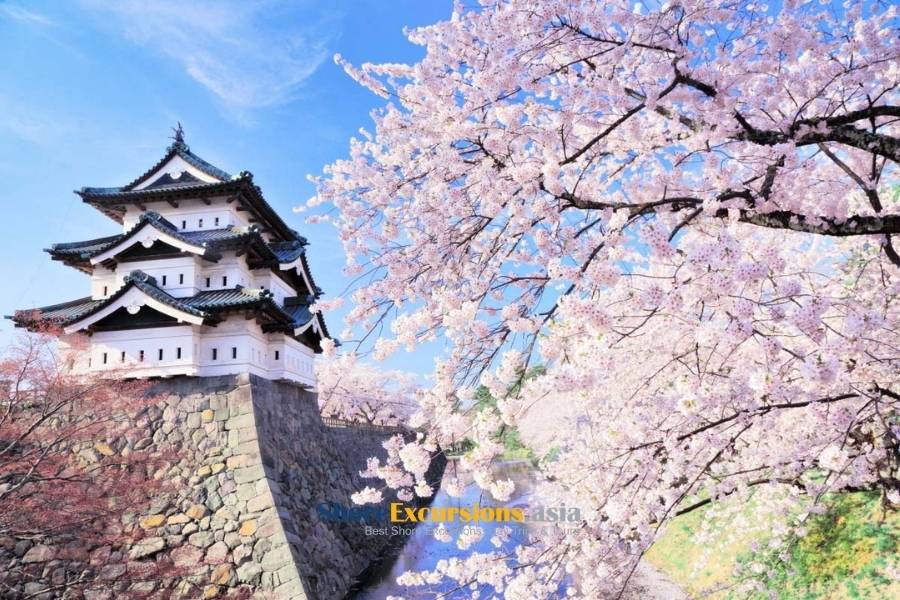
Located about one hour from Aomori City by train, Hirosaki is one of the most beloved destinations in northern Japan. Its crown jewel is Hirosaki Castle, a historic fortress surrounded by sprawling gardens and over 2,600 cherry trees, making it a spectacular spot in springtime. But Hirosaki’s charm extends beyond its blossoms. The town is home to samurai residences, Western-style buildings from the Meiji era, and the famous Hirosaki Apple Park.
According to every detailed Aomori travel guide, a day trip to Hirosaki offers a perfect mix of heritage, seasonal beauty, and local flavor. The city also hosts cultural festivals throughout the year, including a miniature version of the Nebuta Festival and stunning winter illumination events.
Lake Towada & Oirase Gorge
For travelers seeking natural beauty, Lake Towada and the adjacent Oirase Gorge are top recommendations in any Aomori travel guide. Situated about two hours from Aomori City, this area is especially breathtaking in autumn, when the forested gorge explodes with crimson and gold foliage.
Lake Towada is a crater lake known for its deep blue waters and peaceful surroundings, while Oirase Stream offers one of Japan’s most scenic walking trails. With waterfalls, moss-covered rocks, and lush canopies overhead, the trail is a favorite among nature lovers and photographers alike. You can explore the area via rental car, guided tours, or seasonal bus services that operate during peak travel periods.
Hakkōda Mountains
To experience the wild, untamed beauty of northern Japan, look no further than the Hakkōda Mountains, located just an hour from Aomori City. This range is a paradise for hikers in summer and fall, offering panoramic views, alpine flora, and a peaceful escape from urban life. In winter, the mountains are famous for their “snow monsters”, ice-covered trees that create surreal landscapes.
As noted in many Aomori travel guides, the Hakkōda Ropeway is a great way to enjoy the views without a strenuous climb. The area also boasts several natural hot springs, such as Sukayu Onsen, known for its massive mixed-gender bath and traditional wooden architecture.
Asamushi Onsen
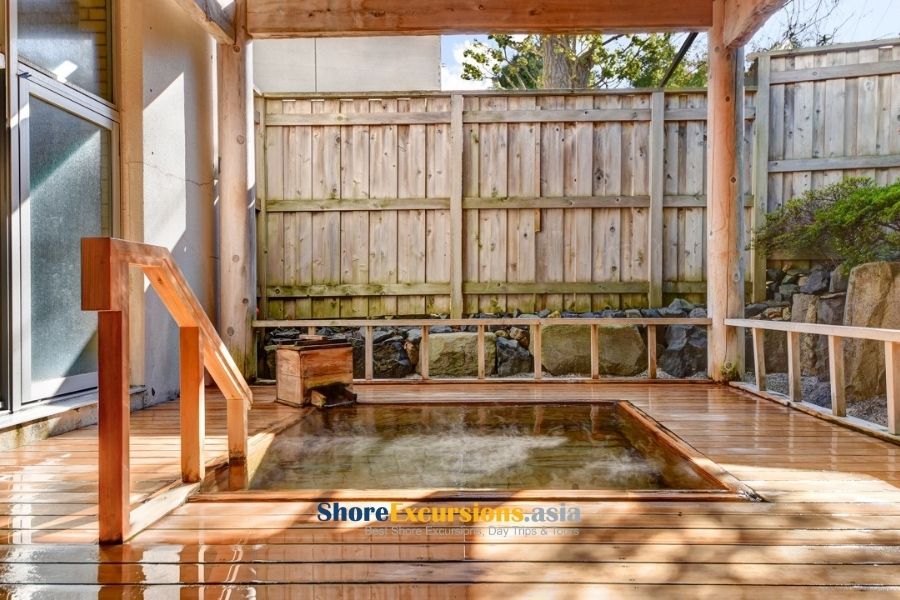
Just a short 30-minute train ride from the cruise port, Asamushi Onsen is a quiet coastal town offering a traditional hot spring experience with ocean views. Often called the “Atami of the North,” this resort town has welcomed visitors for centuries. You can enjoy a soak in a centuries-old bathhouse, stroll along the beach promenade, or explore the Aquarium Asamushi, which is particularly popular with families.
This hidden gem is frequently mentioned in Aomori travel guides for those looking to unwind after sightseeing. It’s easily accessible from Aomori Station and makes for a half-day trip filled with relaxation and scenic charm.
FAQs about Aomori Travel Guide
Below are the most frequently asked questions to help you navigate your visit with ease. Whether you’re arriving by cruise or exploring inland, this section of the Aomori travel guide provides practical answers for a smooth, enriching experience.
Where is Aomori located, and how do I get there?
Aomori is situated at the northern tip of Japan’s Honshu Island and serves as a major gateway to the Tohoku region. You can reach Aomori by:
Train: The Tohoku Shinkansen connects Aomori to Tokyo in about 3–4 hours.
Cruise: Many international cruise ships dock at the Aomori Port, located just minutes from the city center.
Air: Aomori Airport has domestic flights from Tokyo, Osaka, and Sapporo.
Is Aomori cruise port close to major attractions?
Yes. Aomori’s cruise terminal is conveniently located near several key sites. Within walking distance, you can access:
A-Factory (local food & cider market)
Nebuta Warasse Museum
Aomori Bay Bridge and waterfront park
What is the best time of year to visit Aomori?
Each season offers a unique experience:
Spring (Apr - May): Cherry blossoms in Hirosaki
Summer (Aug): Nebuta Festival
Autumn (Oct): Colorful foliage in Oirase Gorge and Hakkōda Mountains
Winter (Dec - Mar): Snow-covered landscapes and relaxing hot springs
Are English-speaking services available in Aomori?
Yes, especially at major tourist attractions, the cruise terminal, and hotels. However, in rural areas or local eateries, English may be limited.
Look for signs in English around the city and at transport hubs
Many shore excursions offer English-speaking guides
Using a translation app or carrying a phrase card can be helpful
Is Aomori suitable for a day trip from the cruise port?
Absolutely. Most of Aomori’s top attractions can be experienced within a few hours, making it ideal for cruise passengers. You can:
Explore Aomori Bay area on foot
Join a shore excursion to Hirosaki, Lake Towada, or Hakkōda
Enjoy local food and shop for souvenirs
Can I visit natural sites like Oirase Gorge or Lake Towada independently?
Yes, but it requires some planning. These destinations are about 1.5 to 2 hours from the city center and are best accessed by:
Rental car
Bus (limited frequency, especially in winter)
Organized day tours (recommended for cruise passengers)
Aomori is more than just a stop on the map, it's a place where history, nature, and local traditions weave together into a rich travel experience. From ancient archaeological sites and vibrant festivals to scenic mountain trails and culinary delights, this northern gem invites you to explore at your own pace. Let its quiet charm and genuine hospitality leave a lasting impression, and consider booking a local tour or shore excursion from Japan Shore Excursions for a seamless, insightful journey through this extraordinary region.




